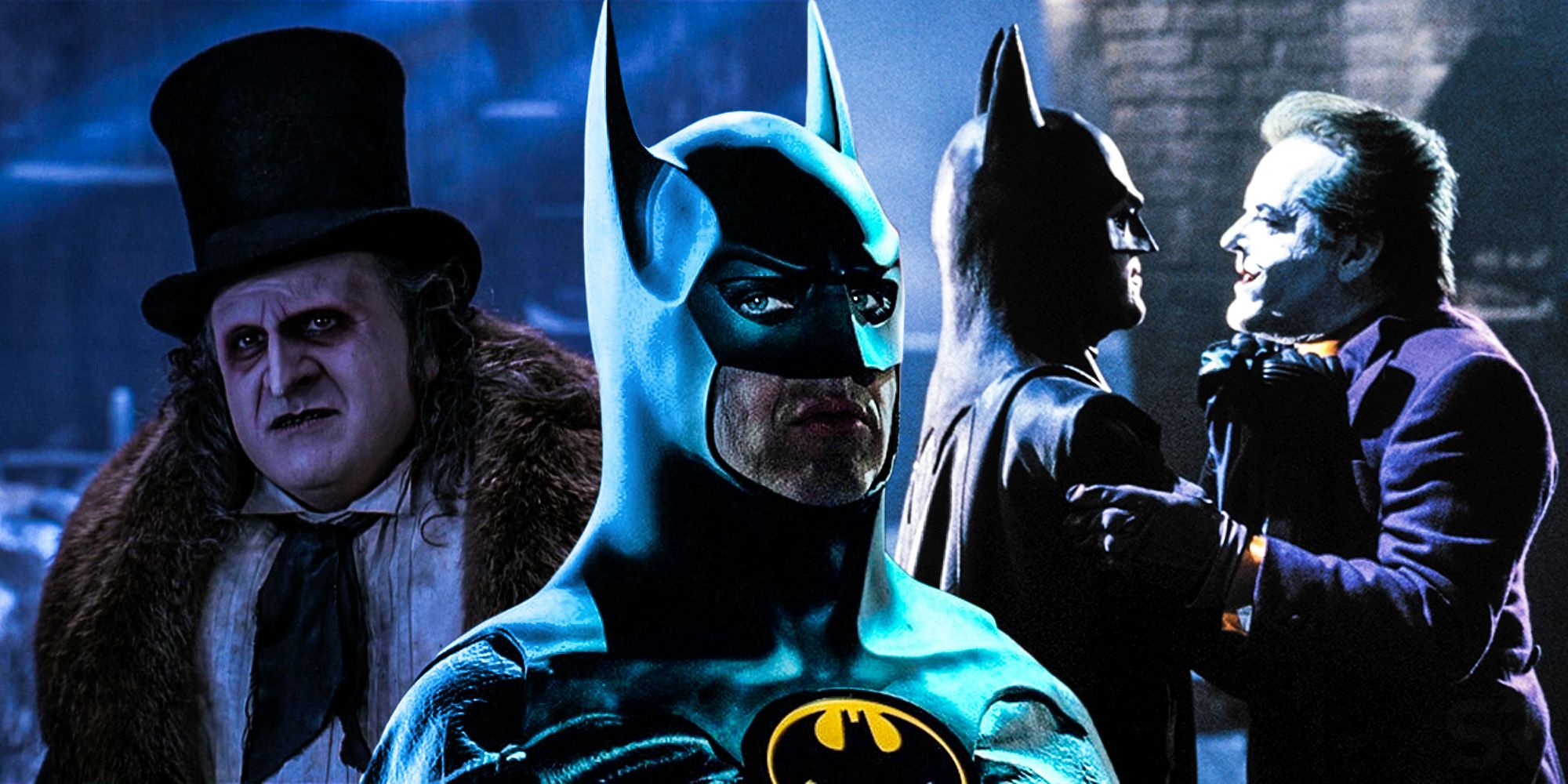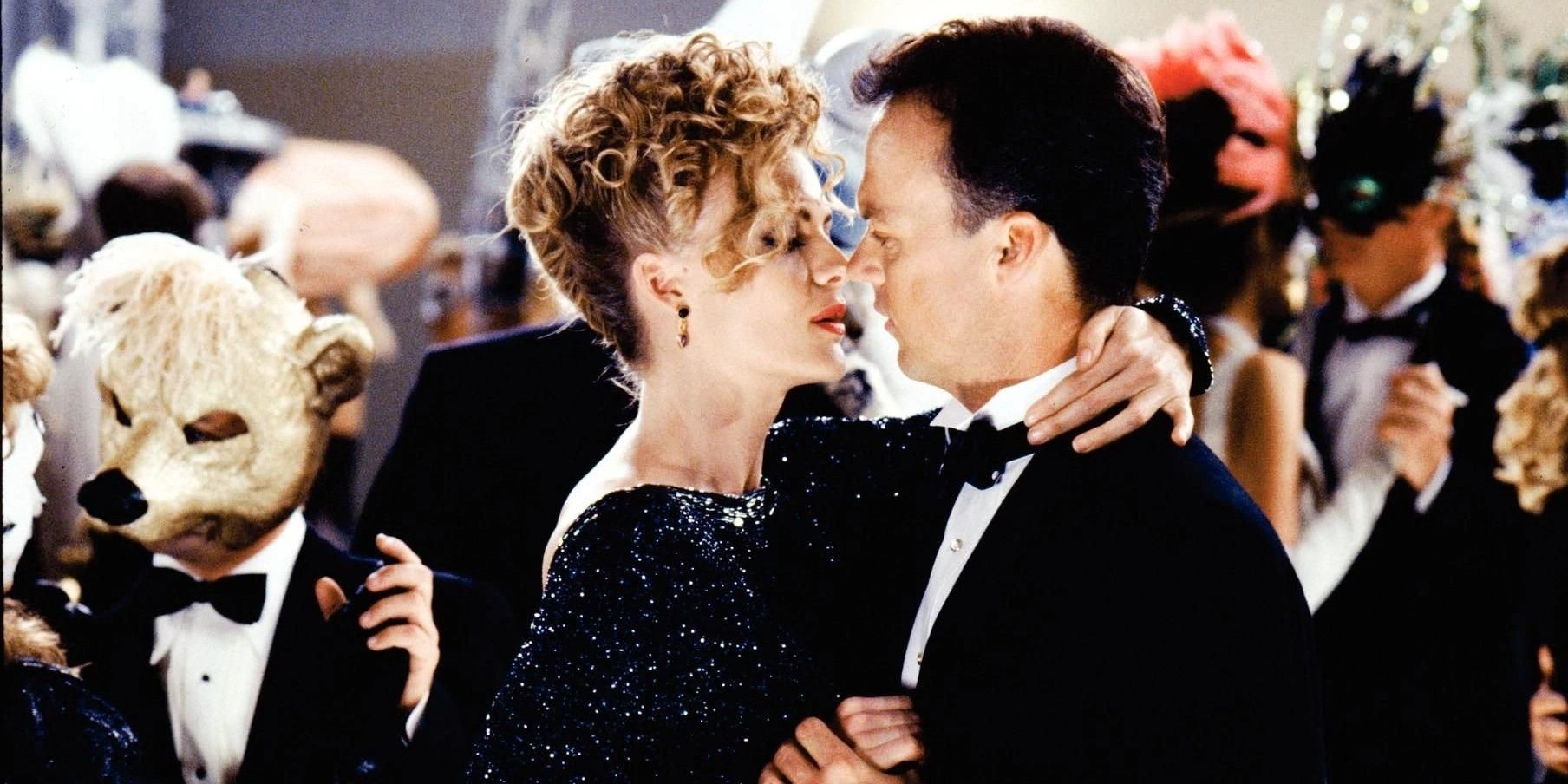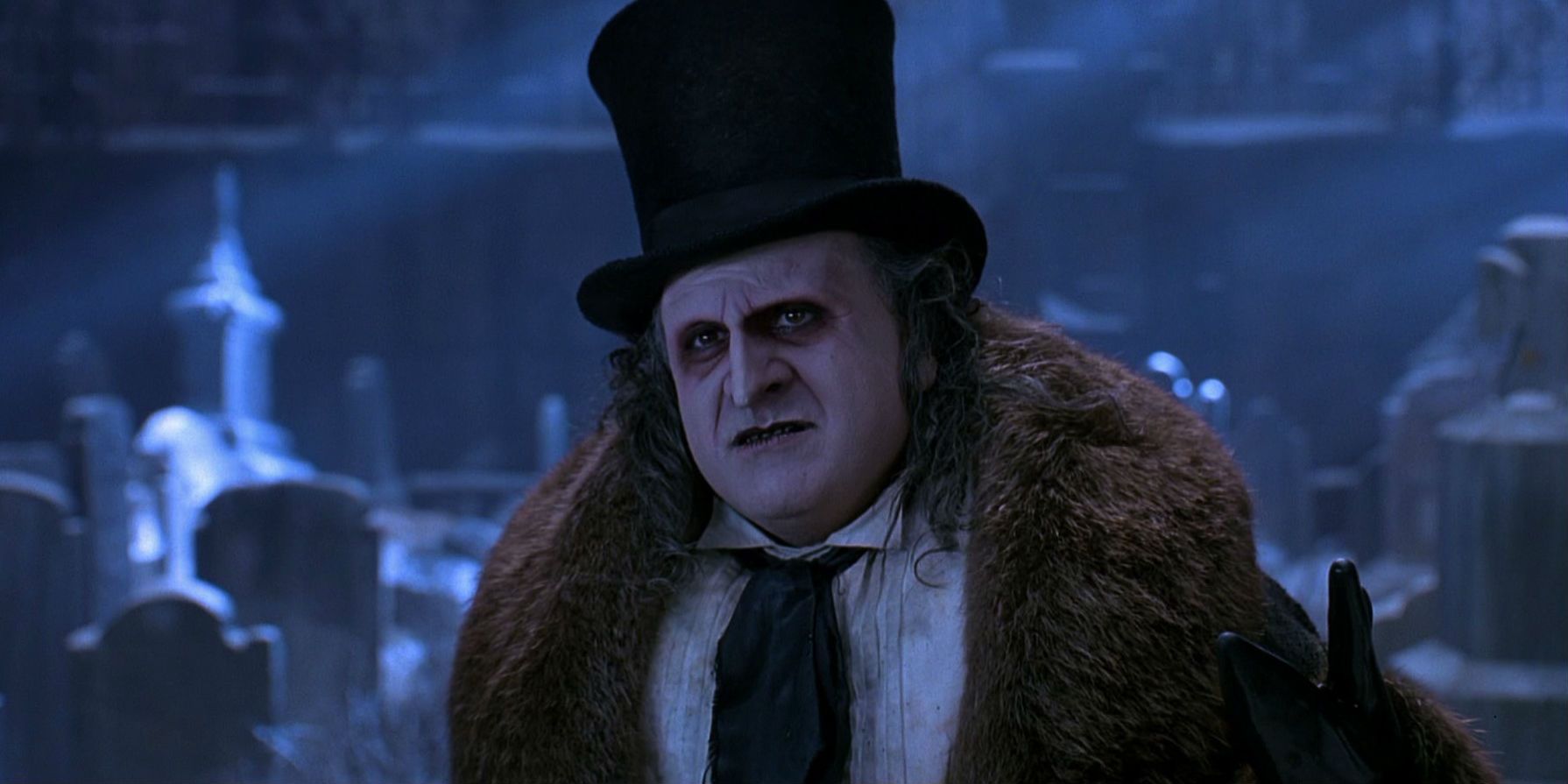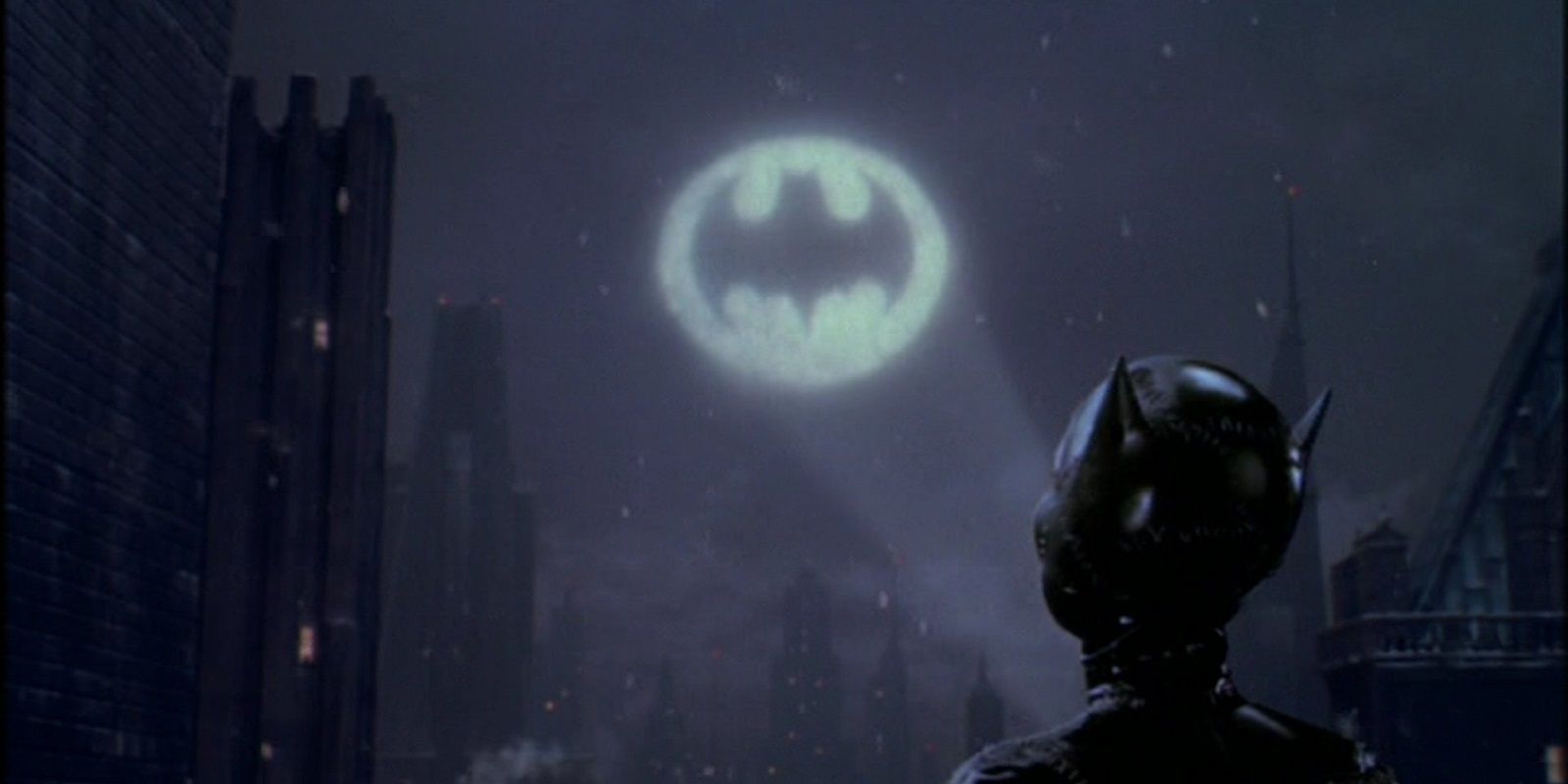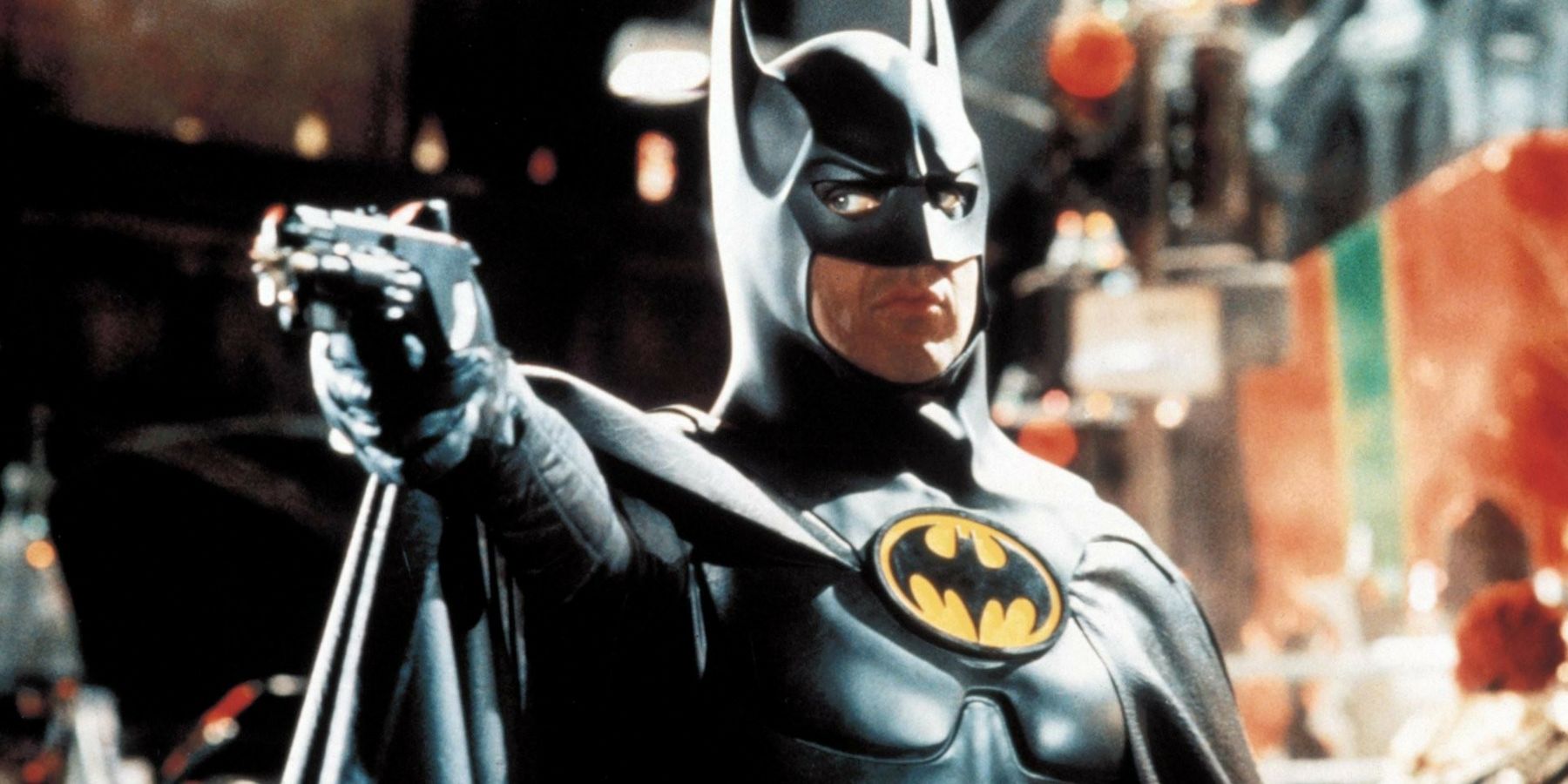Batman Returns is the better of Tim Burton's two films about the Caped Crusader, as it's a clearer version of the talented director's vision, and has aged much better than its predecessor. Burton changed the big budget superhero film game forever with Batman 1989. That first film, which saw Michael Keaton's Batman face off with Jack Nicholson's Joker, was a massive worldwide hit, and reinvigorated Batman as a cultural icon. Warner Bros. smelled a franchise, and they understandably had high hopes for the next Batman film.
But that next film was something of a curveball. Batman Returns was released in the summer of 1992, despite the fact it actually takes place at Christmas, just one of the many odd aspects of the film. Nicholson's hammy, slightly silly version of the Joker was replaced by Danny DeVito's grotesque Penguin, a deformed sewer dweller who hacked up black gunk and threatened to murder every firstborn child in Gotham. It was a decidedly darker affair than Batman 1989, and it also performed slightly worse than expected at the box office. Spooked by the film's lack of inability to sell toys and Happy Meals, Warner Bros. would course correct to a campier, family friendly version of the dark knight in Joel Schumacher's Batman Forever, a film that made considerably more money than Batman Returns.
And yet nearly three decades after its initial release, it's Batman Returns that endures as the best of all the 20th century Batman films. It's the film that found both its director and cast at the height of their respective powers, and a film largely untouched by studio interference. Whatever its merits as an adaptation of Batman comic books may be, it's a pure expression of an artist who is in full control of his own vision.
Batman Returns Has Dated Less Than Batman 1989
Batman 1989 was a megahit, reviving Batman as a pop culture icon after he'd been largely dormant to non-comic book readers since the final days of the campy Adam West TV series. The movie was lauded for its dark, realistic take on Batman compared to the cartoonish television series, but in retrospect, that aspect of the film has not aged well. Batman 1989 very much looks like a product of the 1980s, down to everything from production design and haircuts. Much of the movie's action scenes seem dated and silly at this point, with Nicholson's Joker coming off much less menacing in the wake of performances like Heath Ledger and Joaquin Phoenix's clown princes of crime.
Batman Returns, by comparison, feels like it could have been made yesterday. The disturbing imagery, the moral complexity, and the lampooning of corporate politics all seem as relevant now as they did in 1992, if not more so. Batman Returns is also, from a production design standpoint, a much more stylish film that seems largely unattached to any real era in time, borrowing flourishes of architecture and design from several different eras to make a wholly unique looking Gotham City.
Batman Returns Is Tim Burton's Purest Batman Vision
Tim Burton was in the midst of a pretty amazing win streak in his career during the late 80s and early 90s. After making cult classics like Pee-Wee's Big Adventure and Beetlejuice, the first Batman film made Burton a household name. He garnered further praise with 1990's Edward Scissorhands, and was easily one of the most in demand directors in the world when he returned to take on his Batman sequel.
Tim Burton also had much more creative freedom on Batman Returns, having made the studio so much money with the first film. That resulted in a more aloof, violent movie than Warner Bros. probably would have preferred, but it's arguably a perfect Tim Burton movie, brilliantly marrying his signature aesthetic style with bedrock themes of isolation and personal failure, and it still stands as one of the stranger mainstream superhero movies ever released.
Batman Returns Understood Gotham Perfectly
Over a decade before Christopher Nolan turned the Batman film franchise into a trilogy of crime movies, Batman Returns rather expertly posited the idea that corporate crime pollutes the city as much as muggings and robberies, if not much more so. That corporate greed is given human form in the guise of Christopher Walken's gloriously slimy Max Shreck, the Gotham industrialist who becomes entangled with the Penguin in an attempt to increase his political and financial power. It's a performance so brilliant that it occasionally threatens to overshadow the grotesque fish man and a legitimately surreal version of Catwoman played by Michelle Pfieffer.
Pfeiffer's character is another aspect of Gotham given life - a lowly wage slave who gets too close to real power and is thrown out a window for her trouble, only to be "resurrected" by a mob of feral cats. Her newfound disgust for the wealthy complicates her relationship with Bruce Wayne - as does her obsession with beating up Batman. Pfieffer's Catwoman represents Gotham's lower classes, who have been stomped on one time too many by the powerful, and she intends to make them pay. Juxtaposed with Penguin's plan - the should have been rich kid taking out his mommy and daddy issues on Gotham's innocent children - there are a surprising amount of class issues swirling around Batman Returns' version of Gotham.
Why Batman Returns Is Better Than Batman 1989
To be clear, Batman 1989 is still a very good comic book movie. Keaton's Bruce Wayne is never less than compelling, the third act is surprisingly entertaining, and Nicholson is clearly having a lot of fun as the Joker. But Batman Returns is the better film; it has something to say about not just Batman and his enemies, but about the city of Gotham as well. It's not a pat origin story, and it's not trying to set up a third film - it's simply telling a very dark, very sad story with a lot of style and nuance.
Batman Returns is sometimes a film that gets a little lost in the shuffle; it wasn't a huge, culture shifting film like Batman 1989 or The Dark Knight, and it wasn't particularly good at selling Batman merchandise. But it's the best told cinematic Batman film of the 20th century, and hopefully its recognition among fans and critics only grows as time goes on.

